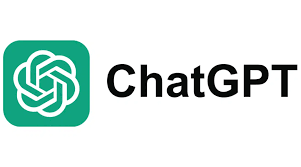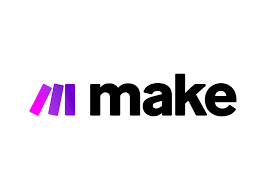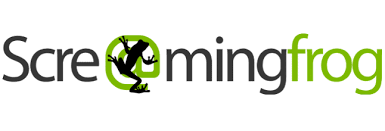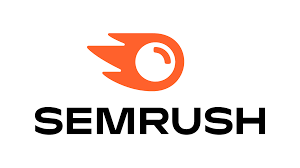
Content Strategy for Programmatic SEO: Quality at Scale
Learn how to maintain content quality while scaling programmatic SEO. Discover strategies for creating unique, valuable content that ranks well and converts visitors.
Mastering Content Strategy for Programmatic SEO
The biggest challenge in programmatic SEO is maintaining content quality while scaling to thousands of pages. This guide reveals proven strategies for creating valuable, unique content at scale.
The Content Quality Challenge
Programmatic SEO faces a fundamental tension:
- Scale Requirements: Need to create thousands of pages quickly
- Quality Standards: Each page must provide unique value
- SEO Performance: Pages must rank well in search results
- User Experience: Content must satisfy user intent
Common Content Quality Mistakes
Most programmatic SEO failures stem from:
- Creating thin, templated content without unique value
- Ignoring user search intent and behavior
- Focusing on keywords over user needs
- Lack of content depth and expertise
The SCALE Content Framework
Use this framework to ensure quality at scale:
S - Structure for Success
Design content templates that accommodate variation:
- Modular content sections that can be mixed and matched
- Variable placeholders for dynamic information
- Consistent formatting and user experience
- Scalable content management workflows
C - Create Unique Value
Every page must offer something unique:
- Location-specific information and insights
- Product-specific features and benefits
- User-generated content and reviews
- Expert analysis and recommendations
A - Automate Intelligently
Use automation to enhance, not replace, human creativity:
- AI-assisted content generation with human oversight
- Automated data integration and updates
- Dynamic content personalization
- Systematic quality control processes
L - Leverage Data Insights
Use data to inform content decisions:
- Search volume and keyword difficulty analysis
- User behavior and engagement metrics
- Competitor content gap analysis
- Performance tracking and optimization
E - Evolve Continuously
Implement systems for ongoing improvement:
- Regular content audits and updates
- Performance monitoring and optimization
- User feedback integration
- Template refinement and testing
Content Types That Scale Well
1. Data-Driven Comparison Pages
Create comprehensive comparison content using structured data:
- "[Product A] vs [Product B]: Complete Comparison"
- Feature-by-feature analysis tables
- Pros and cons sections
- User ratings and reviews
- Pricing and value analysis
2. Location-Based Service Pages
Develop locally relevant service content:
- Area-specific service information
- Local market insights and trends
- Community-specific case studies
- Regional pricing and availability
3. How-To and Tutorial Content
Create instructional content for different scenarios:
- Step-by-step process guides
- Video tutorials and demonstrations
- Troubleshooting and FAQ sections
- Best practices and tips
AI-Powered Content Generation
Using GPT and Other AI Tools Effectively
Best practices for AI content generation:
- Detailed Prompts: Provide specific context and requirements
- Template Integration: Use AI to fill template sections
- Fact Checking: Always verify AI-generated information
- Human Editing: Review and refine all AI content
AI Content Generation Workflow
- Define content requirements and objectives
- Create detailed prompts with context
- Generate initial content drafts
- Review and fact-check information
- Edit for brand voice and style
- Optimize for SEO and user experience
- Publish and monitor performance
Content Personalization at Scale
Dynamic Content Elements
Incorporate personalization without manual effort:
- Location-based pricing and availability
- User behavior-driven recommendations
- Time-sensitive offers and promotions
- Device-specific content optimization
User-Generated Content Integration
Leverage user content to add uniqueness:
- Customer reviews and testimonials
- User-submitted photos and videos
- Community questions and answers
- Social media mentions and tags
Content Quality Control Systems
Automated Quality Checks
Implement systems to catch quality issues:
- Content length and depth analysis
- Duplicate content detection
- Readability and grammar checking
- SEO optimization verification
Human Review Processes
Balance automation with human oversight:
- Sample-based quality audits
- Expert review for specialized content
- User feedback monitoring
- Performance-based content evaluation
Measuring Content Success
Content Performance Metrics
Track these key indicators:
- Search Performance: Rankings, impressions, clicks
- User Engagement: Time on page, bounce rate, pages per session
- Content Quality: Social shares, backlinks, user feedback
- Business Impact: Conversions, revenue, lead generation
Continuous Improvement Process
Use data to refine your content strategy:
- Analyze performance data regularly
- Identify top and bottom-performing content
- Test content variations and improvements
- Update templates based on learnings
- Scale successful content patterns
Future of Programmatic Content
Emerging trends shaping content strategy:
- Advanced AI content generation capabilities
- Real-time content personalization
- Voice search optimization
- Video and multimedia content automation
- Enhanced user experience integration
Key Takeaways
Programmatic SEO can scale content creation from hundreds to thousands of pages
Template-based approaches ensure consistency while maintaining uniqueness
Quality control is essential when scaling content at this level
Data-driven content strategies outperform manual approaches
Continue Reading
Explore more programmatic SEO strategies and insights
How SaaS Companies Generate 10,000+ Landing Pages with Programmatic SEO
Learn how successful SaaS companies like Zapier and Ahrefs use programmatic SEO to create thousands of high-converting landing pages automatically, driving massive organic growth.
E-commerce Programmatic SEO: Scale Product Pages to Drive Sales
Discover how e-commerce brands use programmatic SEO to create thousands of product and category pages automatically, increasing organic visibility and sales.
Local Business Programmatic SEO: Dominate Local Search at Scale
Master programmatic SEO for local businesses. Learn how to create location-based landing pages that capture local search traffic and drive foot traffic to physical locations.
Powered by Industry-Leading Tools
We leverage the best tools and technologies to deliver exceptional programmatic SEO results







